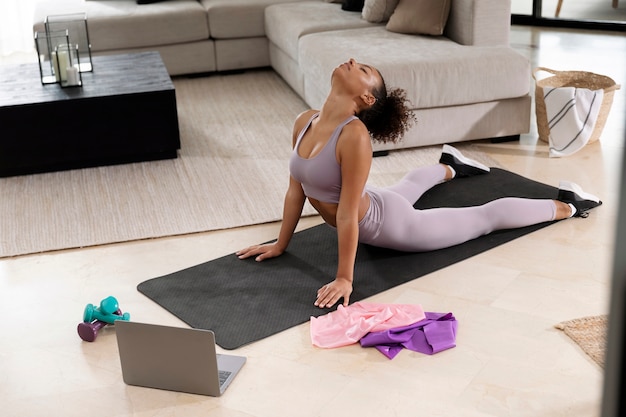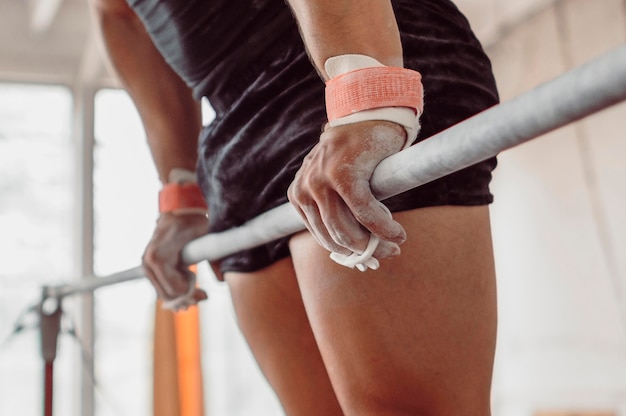Working out at home offers convenience and flexibility, but many home exercisers overlook a critical part of fitness: recovery. Without proper recovery, even the most consistent workout routine can lead to fatigue, injury, and plateaued progress. This comprehensive checklist gives you clear, science-backed steps to recover effectively—so you can train smarter, feel better, and achieve your fitness goals faster.
When you exercise, your muscles undergo microscopic damage. Recovery is when your body repairs this damage, making muscles stronger and more resilient. Skipping recovery means your body never fully adapts—leading to overtraining, soreness, and burnout. For home exercisers, who may lack access to trainers or recovery tools, a structured recovery plan is even more essential.
Sleep is the most powerful recovery tool available. During deep sleep, your body releases growth hormone, repairs tissues, and consolidates motor skills learned during workouts.
Why it works: Studies show that less than 7 hours of sleep impairs muscle recovery and increases injury risk. Aim for 7–9 hours nightly.
How to adapt: Create a sleep-friendly environment—cool, dark, and quiet. Avoid screens 1 hour before bed. Maintain a consistent sleep schedule, even on weekends.

Water supports every metabolic function in your body, including nutrient transport and temperature regulation. Dehydration slows recovery and increases muscle cramps and fatigue.
Why it works: Even mild dehydration (2% body weight loss) reduces strength, endurance, and cognitive function. Replenishing fluids helps flush metabolic waste and supports muscle repair.
How to adapt: Drink water throughout the day. After workouts, consider adding electrolytes if you sweat heavily. A simple rule: if your urine is pale yellow, you're hydrated.
What you eat after exercise directly impacts recovery. Your body needs protein to repair muscle and carbohydrates to replenish energy stores.
Why it works: The 30–60 minutes after exercise is a 'window' when your muscles are most receptive to nutrients. Consuming 15–25g of protein and some carbs during this time maximizes recovery.
How to adapt: Keep simple options on hand: Greek yogurt with fruit, a protein shake, or a turkey sandwich. No need for expensive supplements—whole foods work just as well.

Rest doesn’t mean complete inactivity. Light movement on rest days boosts blood flow, delivering oxygen and nutrients to tired muscles.
Why it works: Active recovery reduces muscle soreness (DOMS) and improves flexibility. It also keeps you consistent without overloading your system.
How to adapt: Try 20–30 minutes of walking, gentle yoga, or stretching on off days. Apps or free YouTube videos can guide home-friendly routines.
Static stretching and mobility work improve range of motion, reduce stiffness, and prevent imbalances—especially important when training in limited home spaces.
Why it works: Regular stretching enhances muscle elasticity and joint health. It also calms the nervous system, aiding overall recovery.
How to adapt: Dedicate 10–15 minutes daily. Focus on tight areas (hips, shoulders, hamstrings). Use a foam roller for myofascial release if available.

Chronic stress raises cortisol, a hormone that can break down muscle and slow recovery. Mental fatigue also reduces workout motivation and focus.
Why it works: Lower stress = better hormonal balance = faster recovery. Mindfulness practices improve sleep and emotional resilience.
How to adapt: Try 5–10 minutes of deep breathing, meditation, or journaling daily. Apps offer guided sessions, or simply sit quietly and focus on your breath.
Recovery isn’t one-size-fits-all. Some days you’ll need more rest based on energy levels, sleep quality, or life stress.
Why it works: Self-awareness prevents overtraining. Tracking helps you spot patterns—like poor recovery after late workouts or high-stress days.
How to adapt: Keep a simple log: rate your energy, sleep, and soreness daily. Adjust workout intensity accordingly. It’s okay to skip or modify a session when needed.
Here’s how to integrate recovery into a typical week:
Recovery isn’t a luxury—it’s a requirement for progress. By following this checklist, home exercisers can stay consistent, reduce injury risk, and make every workout count.

Fitness

Fitness

Fitness

Fitness

Fitness

Fitness

Wellness

Fitness

Fitness

Fitness

Fitness

Fitness

Health

Fitness

Health

Health